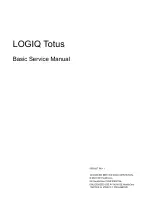
Mash Bath
I N D U S T R I A L E Q U I P M E N T & C O N T R O L P T Y . L T D .
6 1 - 6 5 M c C l u r e S t . T h o r n b u r y . 3 0 7 1 M e l b o u r n e . A u s t r a l i a
T e l : 6 1 ( 0 ) 3 9 4 9 7 2 5 5 5 F a x : 6 1 ( 0 ) 3 9 4 9 7 2 1 6 6
E m a i l : i e c @ i e c p l . c o m . a u
M A S H B - 2 0 1 9 0 3 1 4 . d o c 1 4 - M a r - 1 9
7
FOR MAINTENANCE AND TRADES:
PREPARATION FOR CONNECTING:
•
Remove all packing and ties that may be present for security of transport. Check the
machine generally for damage.
•
Lift off the long rear cover (with controller disconnected) to expose the mains wiring
section of the machine. Observe the circuit breakers. They are for the following
circuits:
•
Mains power. Heater #1 (and usually Heater #2) for the bath.
•
(Floor Machines) Mains power. Heater for the distilled water tank
•
Mains power: To transformer via ON/OFF switch.
•
Low Voltage power. 24V.AC. for the Controller Unit and sensors etc.
The mains neutral block has several blue neutral connections. The earth connection is a
large brass screw mounted to the tray near the power entry point.
ELECTRICAL CONNECTIONS:
The original test wiring is usually left connected to the
machine to assist only in the identification in electrical connections.
For 415V.AC. 3 phase connection, join the 3 phases to three contacts on one side of the
power contactor. Each heater connects between a phase and Neutral and all heaters are
240V rated. Incoming Neutral and Earth must be connected to terminal blocks.
For 240V or 110V.AC. single phase connection, join all 3 contacts on the contactor
together to the one power phase. For 110V machines, the heaters are 110V rated. Neutral
and earth must be connected to terminal blocks.
For connections for 208V.AC. 2 phase (USA & Canada), the connections are different
because they connect between phases. For all systems, the machines are the same and
only the connections of wiring are different. If assistance is required, please contact the
manufacturer for details. Drawings provided show the various electrical connections.
Mains power should be supplied from a mains isolation switch on the wall.
WATER and DRAIN CONNECTION:
Mains water should be from an isolation valve on the wall and, depending on water quality,.
through a fine gauze strainer or water filter. Connect mains water using the reinforced
pressure hose with the threaded fittings. The drain hoses must not be kinked or restricted
and, for fastest draining, the water must FILL the hose so that it draws out the water as if
passes down the drain. The drain hoses should be slipped into a drain pipe near the floor,
because keeping the drain hoses long and vertical helps to reduce the drain time.
ON FLOOR MODELS:
Distilled water supply, either gravity or pressurised, should be through a hand isolation
valve on the wall and then to the hose tail provided on the rear of the machine. To ensure
the distilled water tank fills quickly enough, the gravity HEAD for the distilled water source
should be about 1 metre. If the water is pressurised, the tank will always fill quickly.
The distilled water control solenoid valve is designed to control both low and high
pressure distilled water supplies.








































